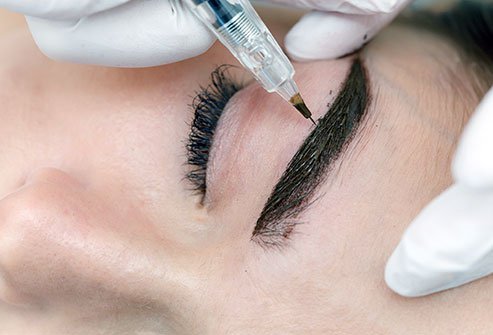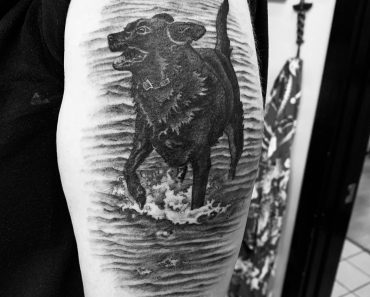Permanent makeup, or Micropigmentation, is a great possibility for those who fancy a natural look without the wearisome physical requirements of applying makeup. These areas are ordinarily treated, including brows, eyelashes, eyelids, and lips. The estimated number of expected treatments, complexities, and out-of-pocket costs are among the determinants taken into reckoning.
In this article, we will discuss all Micropigmentation and what the whole process entails. We have made thorough research on this subject and have detailed all that procedures and how you can look after them. However, make sure that you consult your physician before you go in for this procedure.
In this article, we would talk about Permanent makeup, or Micropigmentation, and learn in-depth all about what it is like to go through this process. In case you are looking to go through this process, make sure to read this whole article so that you are aware of the pros and cons.
What is Micropigmentation?
Contents (Click to Jump)
A cosmetic method called Micropigmentation, which is also known as permanent makeup, cosmetic tattooing, or permanent cosmetics, is practiced to improve or reconstruct the lost skin colors. The most common applications of Micropigmentation are on the face, such as to intensify eyebrows, eyelashes, eyelid, and lip features. A skin whitening method can also be used to hide or repair scars, to even out the skin’s color, and reclaim color lost to areas of skin.
Micropigmentation is Best Suited for Which Types Of Candidates?
Whether you’re a man or a woman, Micropigmentation is ready for you. If you would cherish having your best facial appearance without the physical difficulties of applying makeup, Micropigmentation may accommodate you very well. Here are some medical requirements that can make makeup application or practice challenging:
- Fluttering hands can be affected by a variety of diseases such as severe arthritis, multiple sclerosis, or Parkinson’s disease.
- Macular degeneration and cataracts are circumstances that push to reduced eyesight.
There are also few medicinal conditions for which Micropigmentation can be administered or fixed including:
- As a follow-up to reconstructive surgery on the face.
- During this method, eyebrows that have begun to thin due to aging or underlying medical situations are substituted.
- A vitiligo patient’s skin requires color, so they camouflage it with their eyes.
- After breast surgery, recreate the areola (the area around the nipple).
- Those who are allergic to conventional, temporary makeup can use permanent makeup.
Besides purely cosmetic grounds, Micropigmentation may also be analyzed for the ensuing objects:
- Makeup is not something you appreciate applying every day.
- There’s something you want to support about your eyebrows or eyelashes, such as fuller or more defined lashes.
- It would be delightful if your lips were more defined or had a deeper color.
- There are blemishes on your body that you would like to change with tattoo pigments.
Those who are growing should think thoroughly about whether Micropigmentation is appropriate for them. There could be an inclination in glamour fashion that is unattractive tomorrow, and you don’t fancy ending up with an unattractive presentation. You necessitate taking into deliberation that your face changes with time.
Does Micropigmentation Not Work For Everyone?
The following individuals are not nominees for the system:
- A patient with an active skin condition, such as pink eye, warts, or herpes simplex.
- AIDS patients, diabetics, people with dry eye syndrome, blood disorders, lupus patients, and those with hepatitis B and C.
- Red dyes D and C may cause allergic reactions in some patients.
- Patients who have soft-tissue fillers.
- Accutane-treated patients within the past six months.
How does Micropigmentation Work?
A restricted anesthetic is ordinarily all that is necessary to keep your skin senseless and to keep you protected throughout the procedure.
Most Micropigmentation procedures are handled in an office. Typically, the procedure is executed with a pen-like tool or a conventional tattoo gun. An iron oxide pigment is injected into the middle layer of your skin (dermis) with a needle that inserts a few millimeters. When your cosmetic technician or plastic surgeon conducts the procedure, he or she will wear medical gages.
(When equipping for a procedure and performing it; time depends on the procedure’s complexity) Most maximum procedures persist from 30 minutes to manifold hours. You will be given an antiseptic by your professional to retain the treated area clean following the procedure. You may also be given a lotion so that the area remains soft and magnifies healing. An area may need to be wrapped for several hours after the procedure if the bandage does not protect the area appropriately.
Micropigmentation Can Be Performed On What Parts Of The Body?
There are numerous areas on the body where Micropigmentation can be implemented, but it is most regularly attended out on the face and head. The following examples demonstrate how and where Micropigmentation can be delivered to the body.
Eyebrows:
Our beauty regimens have always concentrated on the eyebrows over the centuries. In today’s environment, Micropigmentation has converted into one of the most modern methods of creating the most beautiful eyebrows without having to contribute hours in front of the mirror. By variation with microblading, which imitates the hair raps of the natural brow, the micropigmentation process uses dots of pigment, a method more in keeping with traditional tattooing. As a result of these small dots, the color can gradually be built up, creating a more desirable (and natural) ombre influence. You’ll be left with full, beautifully dispersed brows, perfectly like the ones most MUAs dream of having. In phases of healing time, microbladed brows take approximately the corresponding amount of time, however, the results last 2-3 times as large! Another prominent advantage is that micro
pigmentation suits all skin types!
Eyeliner:
Micropigmentation eyeliner is also proposed by many aesthetic practitioners. This procedure comprises injecting a dark pigment onto the eyelid to make it resemble a pencil liner or liquid liner. In prevailing, micropigmentation eyeliner is preferred when someone wants to wear eyeliner every day but does not aspire to apply it constantly. It is usually pleasant to apply micropigmentation eyeliner in several different ways to satisfy every individual’s needs. Depending on the client’s inclinations, he or she can inquire about a definite liner only employed at the lash line or he or she can request an ink line that is thicker and inserted onto the lid for a more prominent and impressive look.
Lipliner:
Nowadays, women imagine more than ever having luscious, plump, and beautifully colored lips every day. The most convenient way to obtain these results is through the dermal filler, but many polyclinics also offer micropigmentation lips, which is a procedure that has been produced to make the lips look constantly plump and colorful (basically impersonating the effect of lipstick or lipliner). A small needle is smoothly inserted into the lips to generate a natural pink effect as the technician blends the client’s preferred color (typically custom-blended by the technician). By micropigmenting lips, you can make certain colors don’t disappear or smudge—and enhance the appearance of your lips. Some procedures can also make them look more substantial.
Scalp:
As well as mirroring definite make-up techniques with micropigmentation, it can also be applied as an alternative to hair loss therapy for those with undesired hair loss. It has been evaluated by the American Hair Loss Association that two-thirds of men will undergo hair loss by the age of 35. The association also pronounces that by age 50, approximately 85% of men will have significantly thinner hair than they did 25 years ago. Scalp micropigmentation is composed to help patients who have dissipated their self-confidence due to hair loss. The medication uses a needle that penetrates the skin and formulates tiny follicles throughout the scalp using a technoscientific pigment. By creating small spots on the scalp, scalp micropigmentation formulates a natural-looking and stylish hairstyle.
Scar Camouflage:
Scars can appear conversely, look differently, and have a different color and pattern than normal skin. A cosmetic product, such as foundation or concealer, can be applied to change or improve the differences between a scar and the skin that encompasses it. It is frequently the case, however, that cosmetic makeup tends to wash off throughout the day, leaving scars revealed. When it proceeds to camouflage scars, micropigmentation suggests an alternative to makeup. While it secretes the burn in a related way as makeup, medical micropigmentation can persist for up to three years. Therefore, scarring sufferers need not worry about invariably applying makeup and can supervise their everyday activities with greater determination.
Areola Repigmentation:
Breast rehabilitation and mastectomy are often consolidated in this procedure. A new nipple can be generated by undergoing areola repigmentation or the occurrence of scarring can be drastically diminished. To create a natural-looking impression, the technician executing the procedure can use shadowing micropigmentation techniques to customize the appearance of the areolas.
Before Considering Micropigmentation, What Should Be Done First?
A practitioner from ASDS will evaluate your medical history and conduct a physical examination before the procedure. The doctor and patient take this chance to discuss the procedure, the anticipated results, and any inherent uncertainties.
Moreover, the sufferer must:
- Maintain a healthful lifestyle.
- Expect the wonderful, but be realistic.
- Inform any account of anesthesia-related allergies.
- You should acquaint your doctor if you are currently using any prescription and over-the-counter vaccinations as well as supplements.
- The processing area should not be shaved before surgery.
- Take no blood-thinning remedy for at least two weeks before surgery.
- Smoking should be shunned at most limited two months before surgery.
What to Expect After the Procedure
Typically, patients will encounter inflammation in the treated area after processing. Your specialist will educate you on how often to apply ice to the area, as well as what type of lotion to apply to help decrease swelling. Patients who undergo treatment in the eye area may also experience ripping afterward, which is standard. Because of this, your physician will expect you to have someone accompany you to and from appointments.
In accession to antiseptics, your consultant will also provide you with instructions concerning how to clean the treated area, and this may include evading sunlight as well as several products, such as peroxide, which can negatively influence the consequence. Your coloring may be more severe after the procedure, but this will weaken gradually over time. As soon as feasible if you experience a fever, rash, or encounter excessive swelling or burning in the area following the procedure, consult your doctor.
After a Micropigmentation Procedure, How Should You Follow Up?
Depending on the patient’s situation, she may require more than one medication. Ensure you are transparent about how many treatments are required for the procedure you are contemplating. In extension to the pigment disappearing over time, you may have to bear supplementary treatments to preserve the appearance.
Are There Any Risks Associated With Micropigmentation?
In an identical fashion as any cosmetic procedure, micropigmentation is not risk-free. Here are a few of them:
Infection. The application of contaminated ink or unsterilized needles when there are syringes involved are two causes why there is always a possibility of contagion. The chance of infection due to these reasons is ordinarily much lower if the procedure is performed in the office of a licensed cosmetic physician (compared to an uncontrollable tattoo salon). The practice of unsterilized needles can result in the communication of diseases such as hepatitis, HIV, and staph infections.
Allergic reaction. It’s conceivable to be allergic to the color of tattoo ink (the pigments employed) or the sort of tattoo ink. A scratch test should be administered by your healthcare licensed before performing your procedure. (Your healthcare-trained physician can do this behind your ear or on your finger.)
Eye complications. There is an inherent risk of loss of eyelashes, eyelid injury, crusting, and ectropion (when the eyelid turns away from the eyeball) affiliated with micropigmentation procedures nearby the eye.
Nodules and scar tissue. Tattoo ink can be regarded by the body as a “foreign substance” and may develop nodules (called granulomas) around shreds of pigment. The scars that develop from being injured or traumatized can be called keloid scars. Keloid scars are more prominent and harder to recover compared to bruises.
MRI complications. There have been some statements of tattoo ink pigments conflicting with MRIs (magnetic resonance imaging). There have also been some instances of puffed or burning skin in the tattoo area in patients who have experienced MRI scans of their heads.
The most frequent feedback after micropigmentation is a little bleeding, inflammation, and crusting.
The Micropigmentation Procedure Has Ended. Now What?
Your procedure is concluded on the same day as your return to your home. It is prudent to recommence work or other activities promptly attending your procedure.
A little swelling and redness are to be anticipated after treatment. If you have a cosmetic specialist or plastic surgeon, they will instruct you on how regularly you should ice the region and what variety of ointment you should apply.
To observe the instructions given for your procedure, you will receive specific guidance. Please regard those directions. Any question or attention you may have should be directed to your cosmetic professional.
When Should I Call My Healthcare Provider?
Discuss with your plastic surgeon or cosmetic technician if:
- Your skin is remarkably swollen, painful, or red.
- Fever or a rash evolves.
- An unreasonable amount of radiation is felt or the area burns.
Is Micropigmentation Permanent?
Yes, but. . . Skin cells replenish themselves invariably, so despite though ink never washes off, over time it disappears. It is, however, important to acknowledge micropigmentation as a permanent treatment considering how challenging it is to extract. The method can be long-drawn, unpleasant, expensive, and involve repetitious procedures, and it is inconceivable that any link will be able to be eliminated.
Before Undergoing Micropigmentation, What Should I Research?
To withdraw botched procedures, make sure you choose a professional or specialist who has the requisite training and experience. A pre-treatment discussion with your doctor is also highly supported so that you can review your specific requirements. The most skilled doctors or specialists should be worthy to address all your anxieties. It is significant that you think comfortable speaking your mind to your doctor and that you feel at comfort asking any inquiries you might have about the procedure. In computing, you should make sure that the therapeutic practice is professional when attending the office.
You will also be claimed during your deliberation if anesthesia should be administered for your procedure. If your physician recommends it, you will need to reach a few minutes early to your appointment to allow satisfactory time for the anesthesia to have influence.
Your specialist will also register your medical history; therefore, be impartial with them so that confusion can be avoided later. Moreover, describe to your doctor why you demand the procedure so that he or she knows what to anticipate from you.
At the discussion, your physician will also assess your skin’s composition, tone, and semblance to make sure the pigment matches your natural tones. Photographs are also taken if required.
If you yearn to undergo any of the procedures enumerated above, make sure your specialist or surgeon has expertise with those procedures. Schedule a discussion as soon as possible. During this meeting, you can review your expectations. Make sure you describe your motivations for desiring micropigmentation so your specialist concedes everything you are pondering about.
These healthcare specialists can be requested with the following interrogatories:
- Would you mind sharing your credentials with me? How lengthy has the cosmetic procedure been done by this particular clinic?
- What are my possibilities of success with this procedure? Can I realistically anticipate results?
- Can I see pictures of preceding work on other clients before and after it was concluded?
- Are there any clients I can communicate with currently or in the past?
- How will anesthesia be inflicted during my procedure?
- Are there any complexities and hazards associated with the procedure I’m contemplating? Will these complications be greeted?
- During my recovery phase, what should I expect?
Any inquiries should be answered by an honest specialist. Your technician will be able to answer any questions that might be on your brain, so make sure that you feel comfortable discussing them with him. When your healthcare professional checks your skin after your first consultation engagement, they will estimate its tone, texture, and complexion to choose the most relevant pigment for your subjective coloring. In addition to your medical chronicle, past surgeries, and medications, the cosmetic surgeon or plastic surgeon will interrogate you about your allergy records. He or she might take pictures, as well.
Does Insurance Cover Micropigmentation?
Unhappily, no. Your expense will be incurred if you choose to experience this cosmetic procedure. Costs fluctuate depending on the remedial procedure you choose and the background of the practitioner.
Keeping Your Look Intact
If you are questioning how many medications you will require, please converse with your doctor when you go in for your conference. You may expect two or more treatments to accomplish solicited results. Additionally, your skin’s coloring will progressively evaporate over time; therefore, you would need to undergo supplementary treatments to preserve your presentation.














